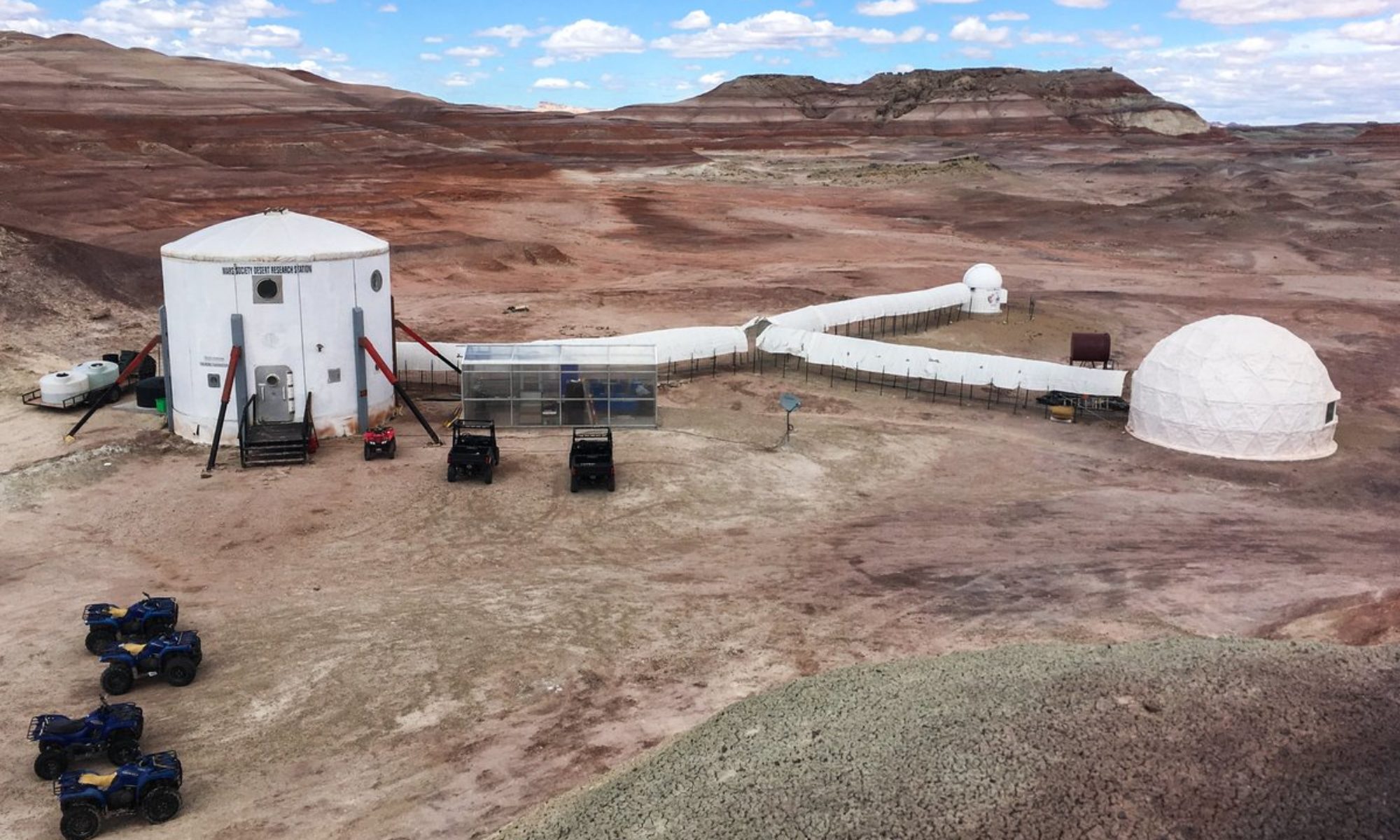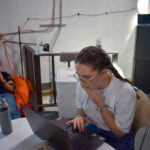SOL 8: Do you copy?…
14:20: The second week of Mission 311 starts off beautifully: the first week allowed us to set up all the experiments that will take place throughout the mission. Now it’s time for us to schedule those on which we couldn’t focus earlier. Starting this morning, Quentin, Meddi, and Robin went on an EVA to Candor Chasma to begin photogrammetry. They identified different locations where they placed beacons, and using a drone, they took hundreds of photos of the entire area, from which they will create a 3D map. We will use this during the next phase of the experiment. This was also Didier’s first EVA, our mascot!
This outing was the longest in terms of time and distance: Candor Chasma is a deep fissure carved into the desert. It’s a very interesting place to study, but this distance weakens communication signals, so Somaya, who was HabCom, lost all communication with our EVA crew members. When trying to establish communication with the EVA crew, we first ask if they can hear us: “Do you copy?” This question often went unanswered this morning…
Meanwhile, the HAB was rather quiet. Erin and Somaya worked on an abstract, a sort of summary, to write their scientific articles about the mission. Célyan took care of the GreenHab for the first time! He also worked extensively on managing the data collected for the Orbital Architecture experiment. We have already collected over 8 GB of physiological data, positions, and cognitive tests for the experiment, and it takes a lot of rigor to manage all these data. For my part, I started working on a small project that we’ll keep as a surprise…











You must be logged in to post a comment.